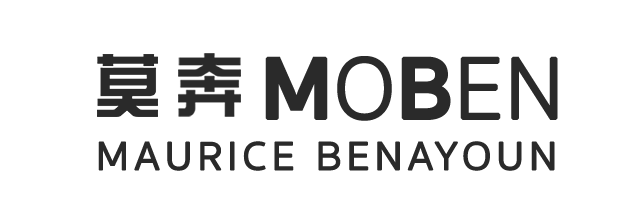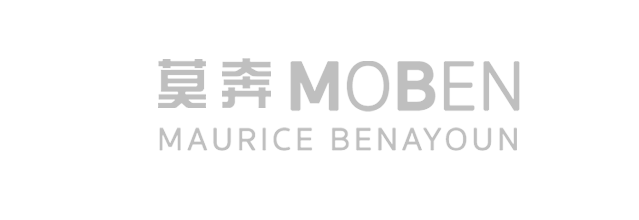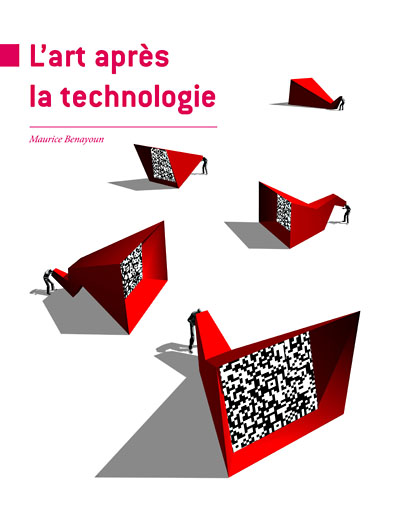Defining the future of art
Art After Technology
The complete text of the article, some extracts were published in MIT, Technology Review #7, French edition.
Defining the future of art
This is a question which no sensible artist would wish to have to answer, perhaps because the same artist has, in general, the impression that he answers it through his artistic practice. Believing the opposite would mean having the feeling of not having made the right choice : who would wish to be considered as an artist of the past? The present goes by so quickly.
Defining the future of art becomes an exciting project if we consider it from the negative aspect. If we admit that art never acts where we say it should (or at least that is what it claims), this attempt at a definition would involve defining the frontiers of territories which will not be, in the years to come, those occupied by constantly shifting practices.
There is however an obstacle we come up against before such a project : the death of the future, buried along with modernity. We might be condemned to eternally reliving the flashes, whims and accidents of the past.
The art of the future sounds like the title of a second-rate science fiction film, retaining the technology-hungry and optimistic flavour of the 60s, delicately nostalgic it is true, but pathetic even so. Defining the future of art might be close to a conventional funeral for the Art of the Future. The project is not very festive, but it deserves to be attempted, so that others may make fun of it, listing its imperfections and contradictions.
On method : tracking down, in the present period, the clues to tendencies on the rise, touching on signs of artisticness. It may be that we will discover that important technological changes often have an effect that is not necessarily technological in character, but gives another reading of the universe.
Art after technology
A year ago, I threw into the dump* the project of writing a fundamental text, the title of which would be : Art After Technology. The subject is becoming more and more relevant. The question of the future of art might be contaminated by what is, for many people, only a peripheral phenomenon to which artistic constants would remain eternally oblivious : technology.
Indeed, it seems that a large number of important changes in the field of art in these last decades have been due less to the evolution of tendencies on the art market, affected in the short term by promotional tactics set up by those who decide on quoted values, than to the sudden capillary emergence of communication and information technologies invading all fields of activity.
There is nothing surprising about this, but suggests to us a series of futile hypotheses directly deduced from what we can see in the present.
Let us set out the hypothesis that the history of art cannot be satisfied with eternally repeating of subject-matter or exhausting it. So many pages written with a loving pen that only become legible some time later. The art of the future might simply be that of the present that we will end up understanding, not with the return to a romantic image of the accursed artist, so dramatically incarnated by Vincent Van Gough, but because the most modern practices are not the fruit of the process of recognition which is prevalent in the artistic field and they do not respond to the listed external signals of artistic talent.
If this is not a pipe, what is it?
Magritte’s statement still resounds in the minds of those who ask themselves about art in terms of representation. When writing in Betrayal of images ‘This is not a pipe’, it was through a negative statement that Magritte reminded us that when we are looking at a canvas, it is an image that we see. It is only later that we are reminded that when we look at an image, it is also painting, that painting is also ideology, that ideology is also a spectator, that a spectator is history continuing, but that he does not control.
This is not an image
We have not finished evaluating the impact of real time – the possibility of receiving the signal at the very instance it is emitted – on the emergence of new forms of symbol. The image is no longer the accomplishment of the artistic gesture, it is an instant in its birth. It is an instant in a process the definition of which becomes the true work of the author.
This is not a window
The image is no longer simply a hole in the wall; the window showing everything by separating the observation space and the representation space, keeping at a distance the object of the pictorial offence.
It has been said that if painting is a window onto the world, virtual reality is the door.
This is not outside
The external aspect of the performance is no longer an essential element of representation. Immersion, as the capacity of a system of representation to welcome the spectator in such a way as to authorise behaviour equivalent to that which he has in physical space, becomes a characteristic of possible representational activity.
This is not the world
It is becoming increasingly worrying to think of supposedly immersive creations that plunge the spectator into the very heart of the representation and which could neutralise distance, the inalienable faculty to exercise one’s freedom of opinion concerning the illusion of a performance. Immersive creation would contribute to the world becoming a representation, to its de-realisation. The situationist criticism of the performing arts would thus be confirmed.
If such concerns were justified, then how can we imagine that, plunged as we are in the physical world, we are capable of free thinking in respect of the latter?
This is not a spectator
Real time enables interaction, the work taking into consideration the spectator’s existence, the spectator recorded in a universe of symbols legible and alive through his visit. Immersion enables the creation of symbolic situations; it is through the definition and production of situations that a work is created. The spectator becomes a visitor experiencing the symbolic universe, rather than someone ‘interactively’ controlling the representation.
This is not interactive
Interactivity is an intrinsic property of our relationship with the world, it is a necessary element of its understanding. The world is understood through dialogue which, even taken to its extreme – making love and making war – are the ultimate reference points of interaction. However, this interactivity is not necessarily declarative. Beyond simple causality, the fact of the work taking into consideration its spectator can mean observation of his behaviour, interpretation or external factors which might not be determined by the human being. We say that such works are ‘adaptive’ or even better ‘responsive’, since the ‘response’ is an instant of dialogue.
Generative works are not necessarily interactive: Art after technology does not refuse the image, does not refuse the object, does not refuse pleasure and even less so disappointment.
This is not an object
It is, however, “flow” more often than “object”. Symbolic matter has become fluid, increasing its plasticity, even if it is becoming more and more difficult to maintain the shape that we attempt to give it. The process becomes more important than the trace left, tracking (following and capture) replaces imprint. Pollock, who had understood that the work can be the encounter between the gesture and the surface, would be surprised to see projected paint continuing its itinerary beyond the canvas. Being led to appreciate not the canvas object transmuted by the alchemy of the picture, but the suspended gesture unfolding in space for eternity, or staining the landscape miles around. Changing the world, beyond the image.
This is not immaterial
Immateriality is far from being the sublimation of human thinking, since on the contrary, it is at times the projection of thought on matter which produces that specific intensity that we attempt to achieve (once more). The reification of flow, of thought in action can become an extreme form of its declaration, as it was in the past, but in all awareness or as a deliberate decision to stop time in order to focus on the imprint. And we will continue to differentiate the two sides of the same coin : dematerialisation of the sensitive and reification of the intelligible.
This is not a place
Creation based on technology is merely concerned with demonstrating; it is utopia in its most pragmatic form. A life-sentence case that has been dismissed, outside the frame.
This is not here
Localising the work on the net multiplies instances, avatars and appearance of various forms. The source code is elsewhere, often duplicated, copied and reworked. Localising becomes a challenge for writing in space (locative art) but not a constraint linked to the physical nature of the artistic object.
This is not there
Virtual reality, the property of the physical world, the present of which in our surroundings contaminates the representation, merely awaiting an excuse to be brought up to date. Real time allows us to apply it to symbolic forms. The consequence is that the work is less in what we perceive than what it will become. In this respect, the image is only the evidence of the process and not its ultimate goal.
This is not a still life
The ability to adapt, react and generate suggests productions which work on evolution as a material, beyond the supports. The word is materialised as long as it is still on the move. The development of biotechnologies has produced a new space of investigation for a number of up-and-coming artists who work on the living as a material, the writing of which we are just beginning to master. DNA (Kac in action, Lanier in intention) is to become the text that we contribute to writing, situated on the uncertain limit between what is possible and what is desirable.
This is not new
If technologies have facilitated renewal, accumulation should reduce the motivation for what is new. The spectacular becoming banal and awaiting transfiguration.
This is not unique
After digital representation, the unique work becomes a true choice.
This is not reproducible
Yet if we have been able to ask ourselves about the technicological reproducibility of works of art and the impact this can have on their nature (W. Benjamin), it is now their non-reproducibility aspect, resulting from their fluidity, their flexibility and fleeting character that is at stake.
This is not possible
Virtuality is about what is possible, but is not satisfied with the latter. Quest for diversity sometimes becomes exhausted as a result of the random, a variation of complexity through amnesia. Yet it is often in the definition of what is possible in the work that the freedom of writing becomes possible.
This is not rare
Knowledge, know-how and possession of the work are more and more commonly shared. Certain persons tend to find this disturbing.
This is not for sale
Consequently, the more places the work is seen in, the less material it becomes, the more possession of it becomes difficult, with all the consequences this has concerning sale of the work. If rarity is part of the institutional definition of the work, it is the work that should evaporate when it becomes diluted in the crack between physical space and digital space. But it has survived the test : it is the definition of art which has shifted.
This is not what you see
The essential in the process is invisible, upstream of the sensitive : image or sound. This is what gives it a meaning, but is not sufficient to demonstrate it.
This is not cut off from the world
The same technologies which have enabled the immersion of the visitor have also made possible fusion between fiction and reality. After the sudden appearance of reality in fiction (reality shows, news shows, documentary dramas etc) it is fiction which has slipped into reality. Beyond the extremes of representation, of reality shows, of excessive broadcasting of events, the physical space, often situated in town, has become a support/medium to be worked on in detail. Mixed methods, increased reality, geo-localisation and urban action have become artistic playgrounds on a totally new scale.
This is not a game
To outsmart the process of the society becoming a performance, the practice of fusion must be critical : it is spilling out of the urban environment and overlapping onto the political and social space. Two tendencies are developing, one more of a documentary character and one might wonder whether it is being played out in the right place, the other militant, attempting to deviate understanding through action that is often intrusive and sometimes violent in character.
This is not politically correct
As we grow tired of ethical injunctions, a tendency could develop that would be fundamentally politically incorrect, in the name of free speech and the possibility of exploring limits.
This is not technology
One of the important impacts of technology on art will probably be the absolute refusal by the world of art to accept it, and there are already a large number of projects flourishing that are low tech and unplugged and for which it is difficult to ignore the fact that technology is too visibly rejected for it not to be the true subject matter.
This is not thin
If we take the humour of Duchamp to be a dogma, chasing after the infra-thin remains the watchword of those who think he is against what is spectacular, whereas more often than not, brandished as a label, it becomes synonymous with inconsistent.
I did not do this!
Participative creation, collective production, anonymity, multiple identities, sampling, ready-made, open source, copyleft and creative commons contribute to confuse the notion of the single author, yet without affecting the claim, appropriation and processes of validation.
This is not finished
The work is constantly in progress, not in the making. The achievement of a process of production is not necessarily a finished (inanimate) object the formal components of which have been carefully assembled and which has reached a kind of perfection. But we could probably find other forms of completion in emerging symbolic processes. Also, any analysis of the subject can only take on a transitory, performing, unfinished character, and to this aim must sometimes accept to speak about the present in the future.




